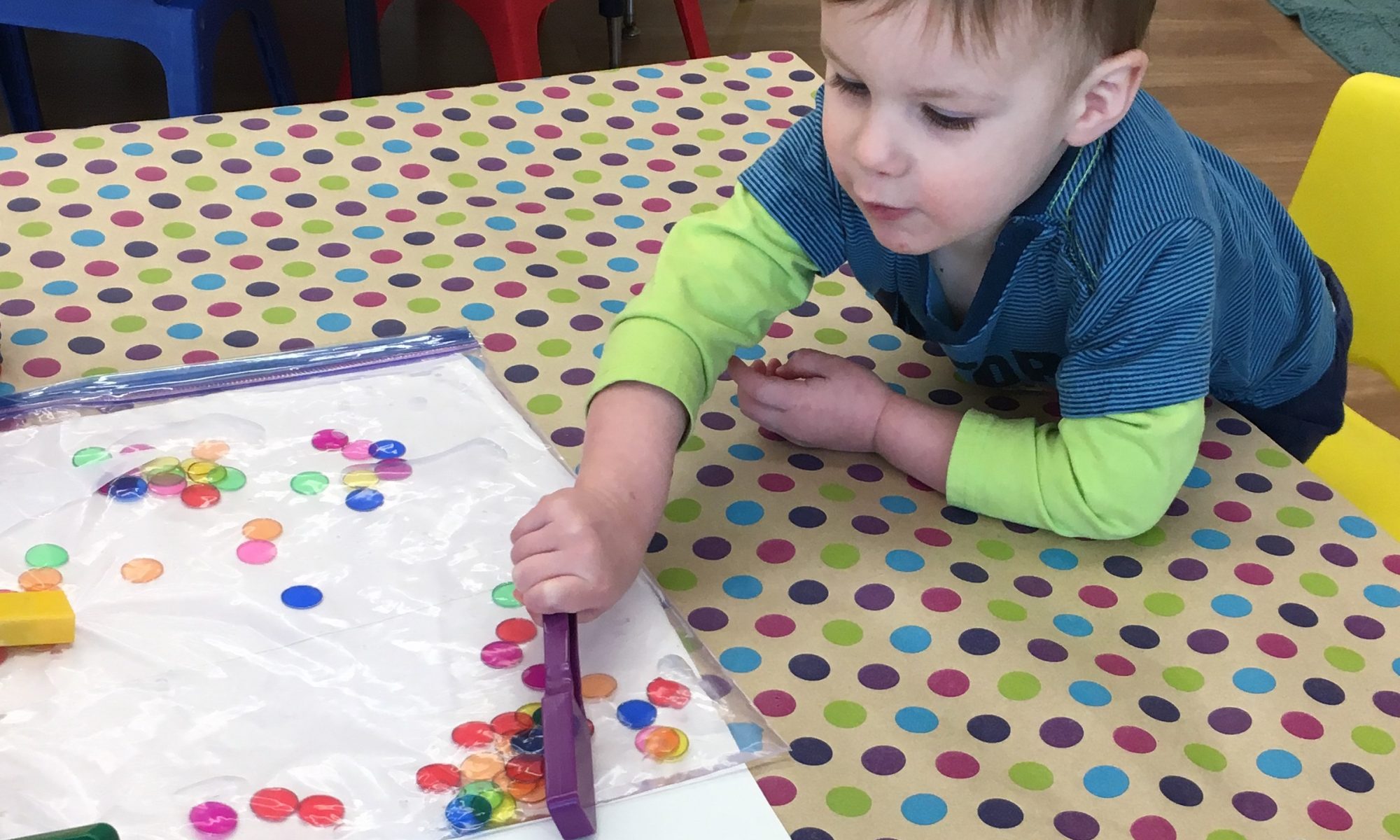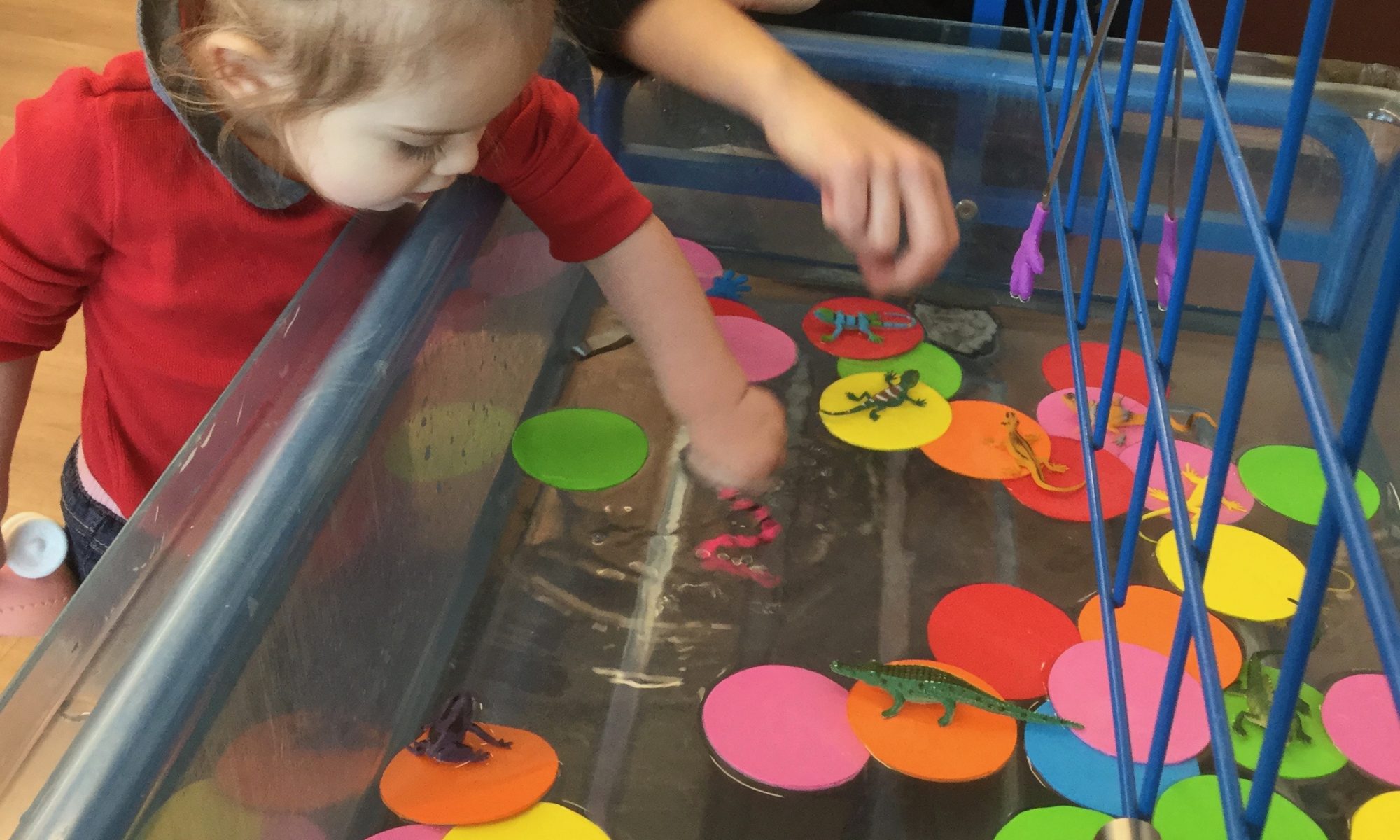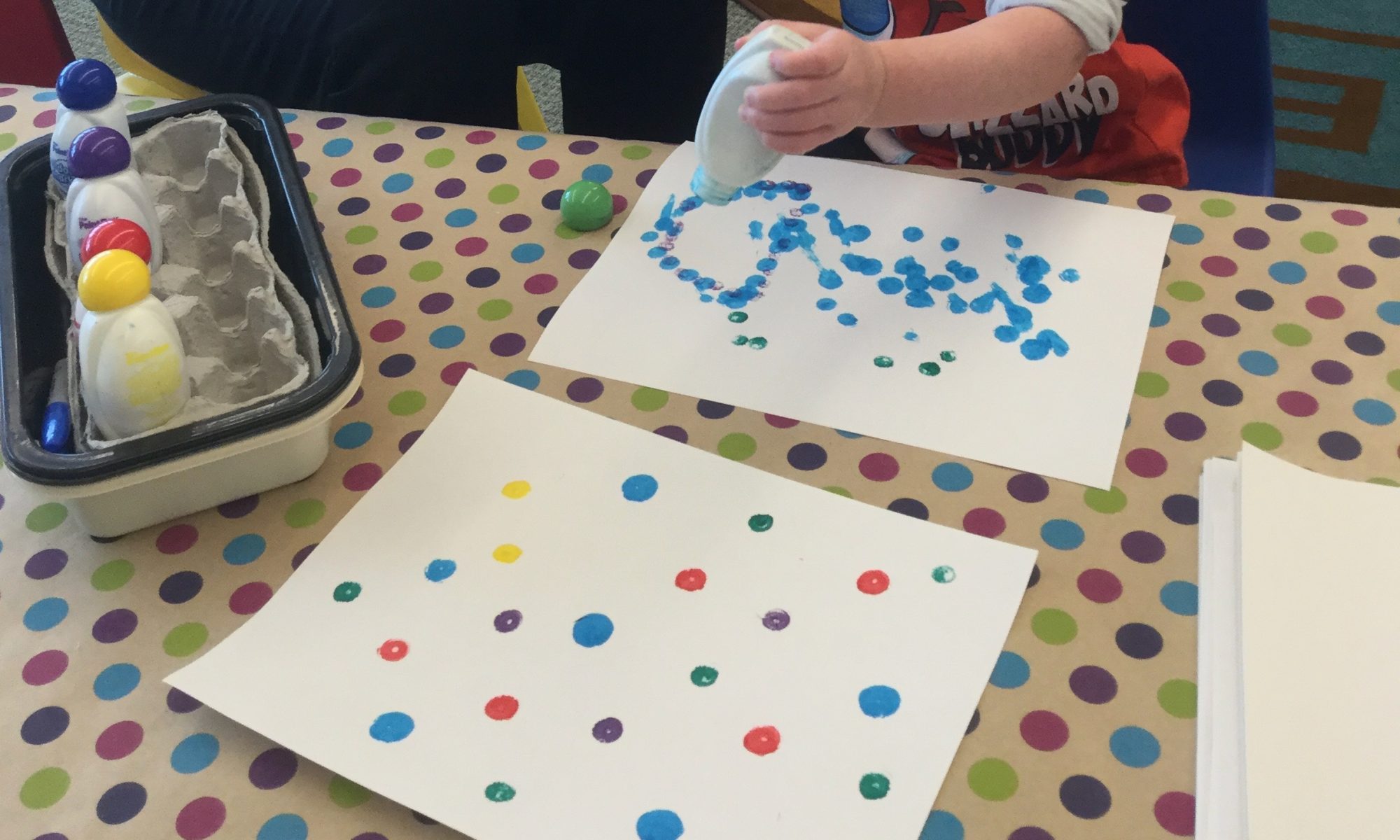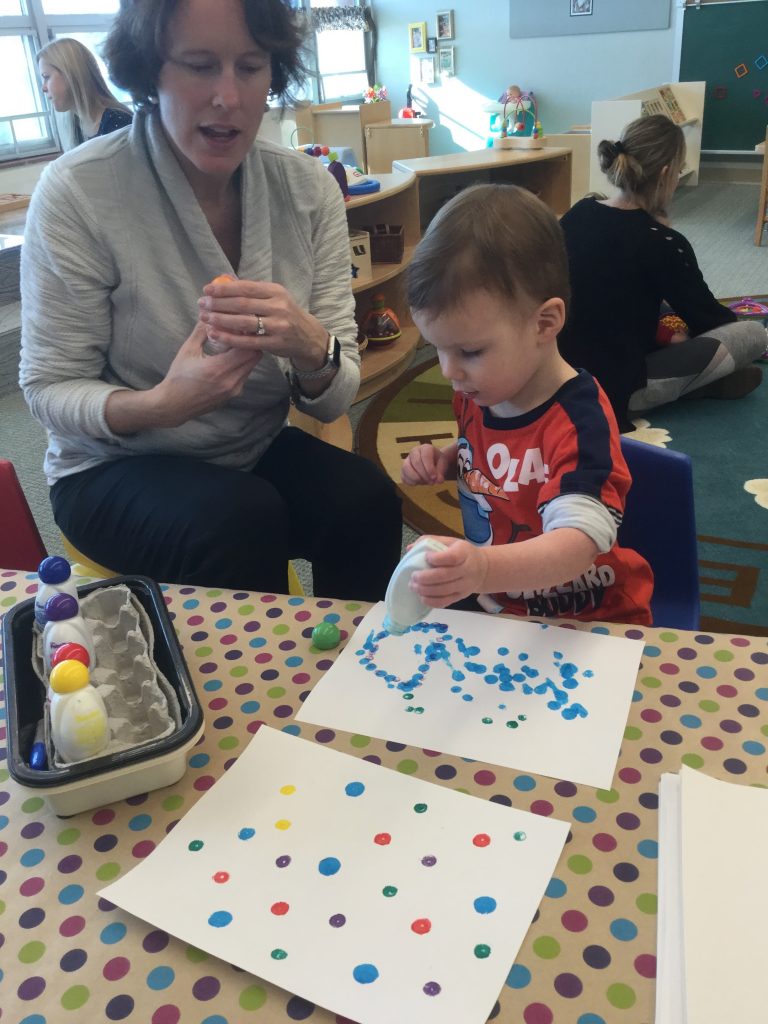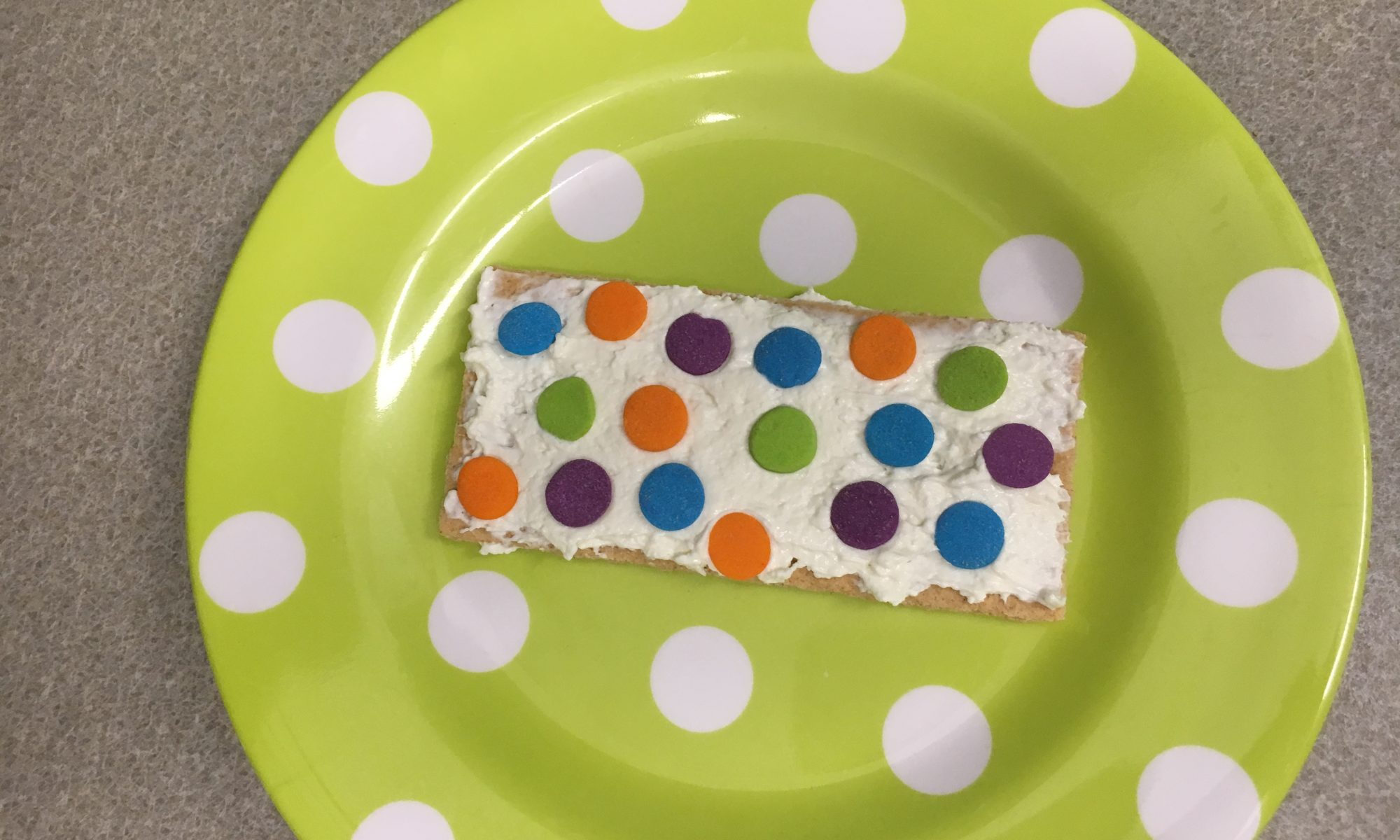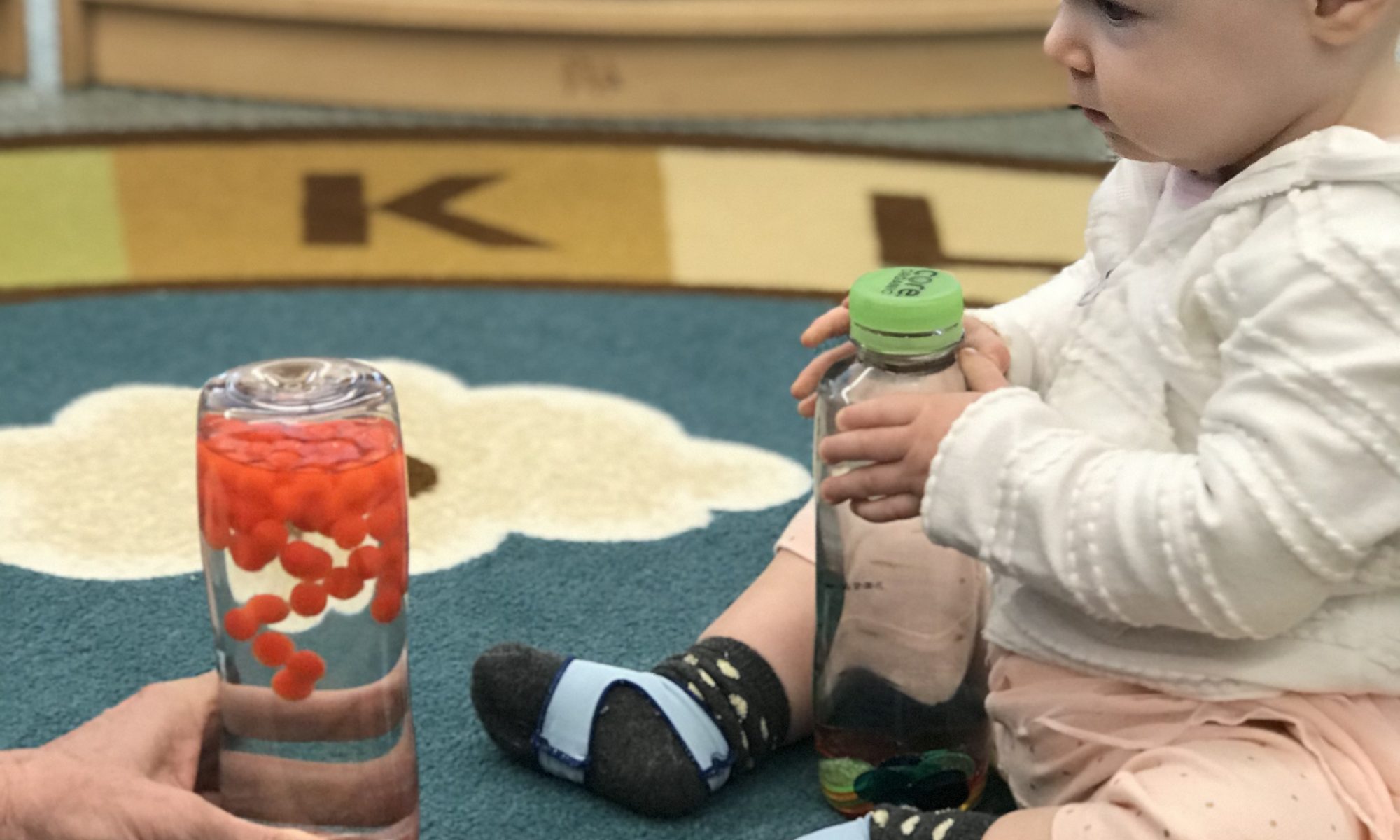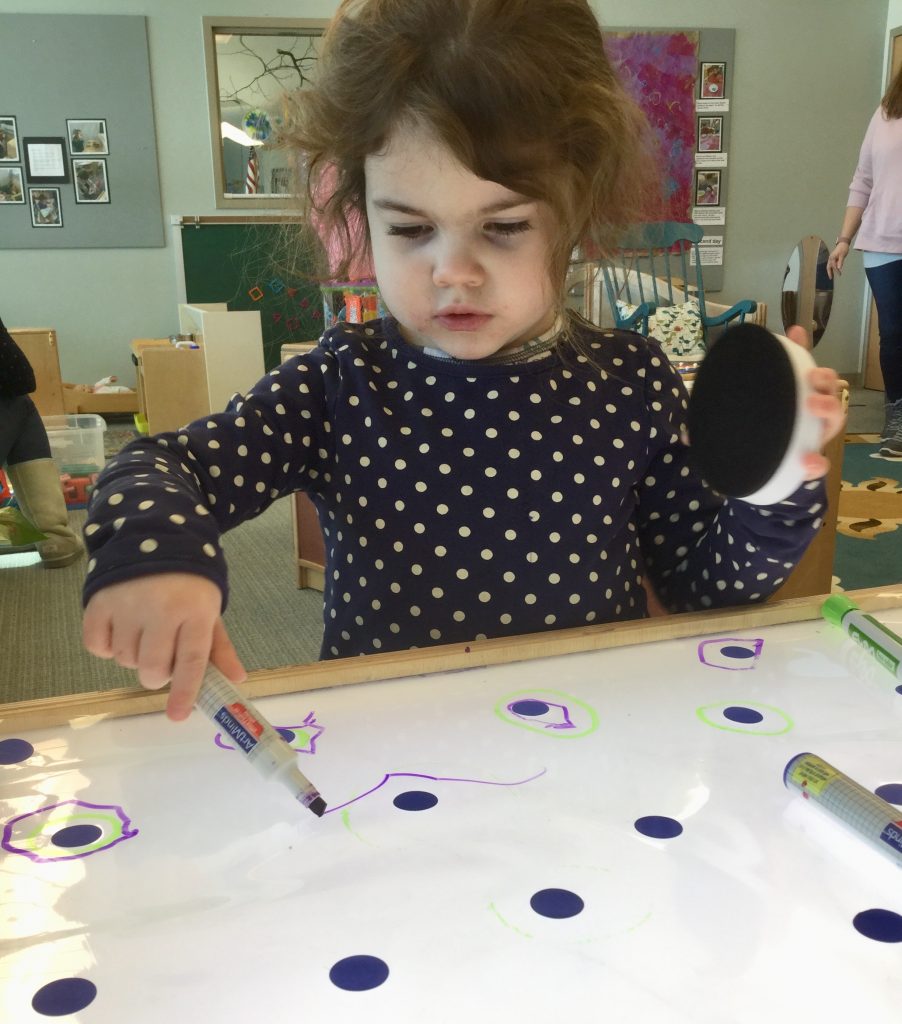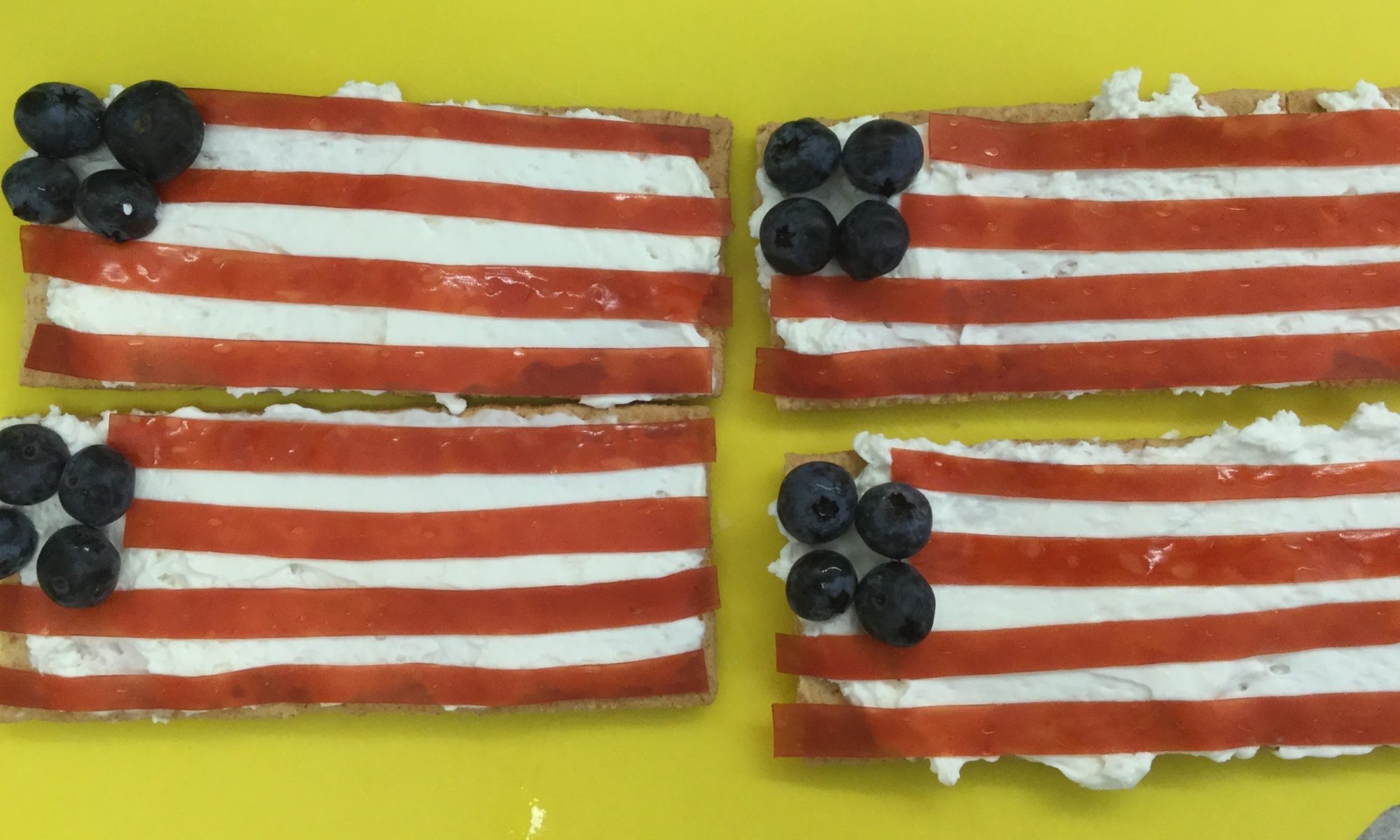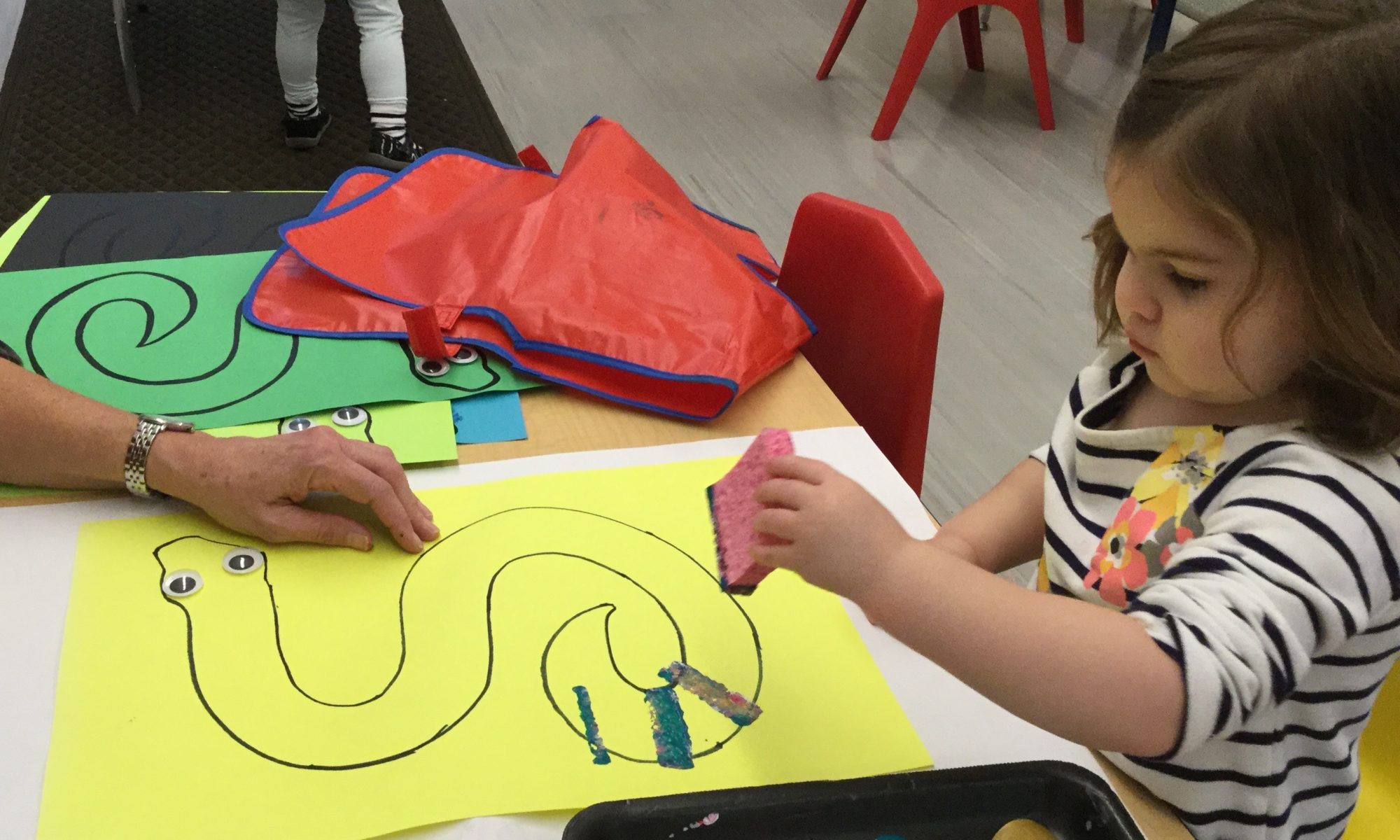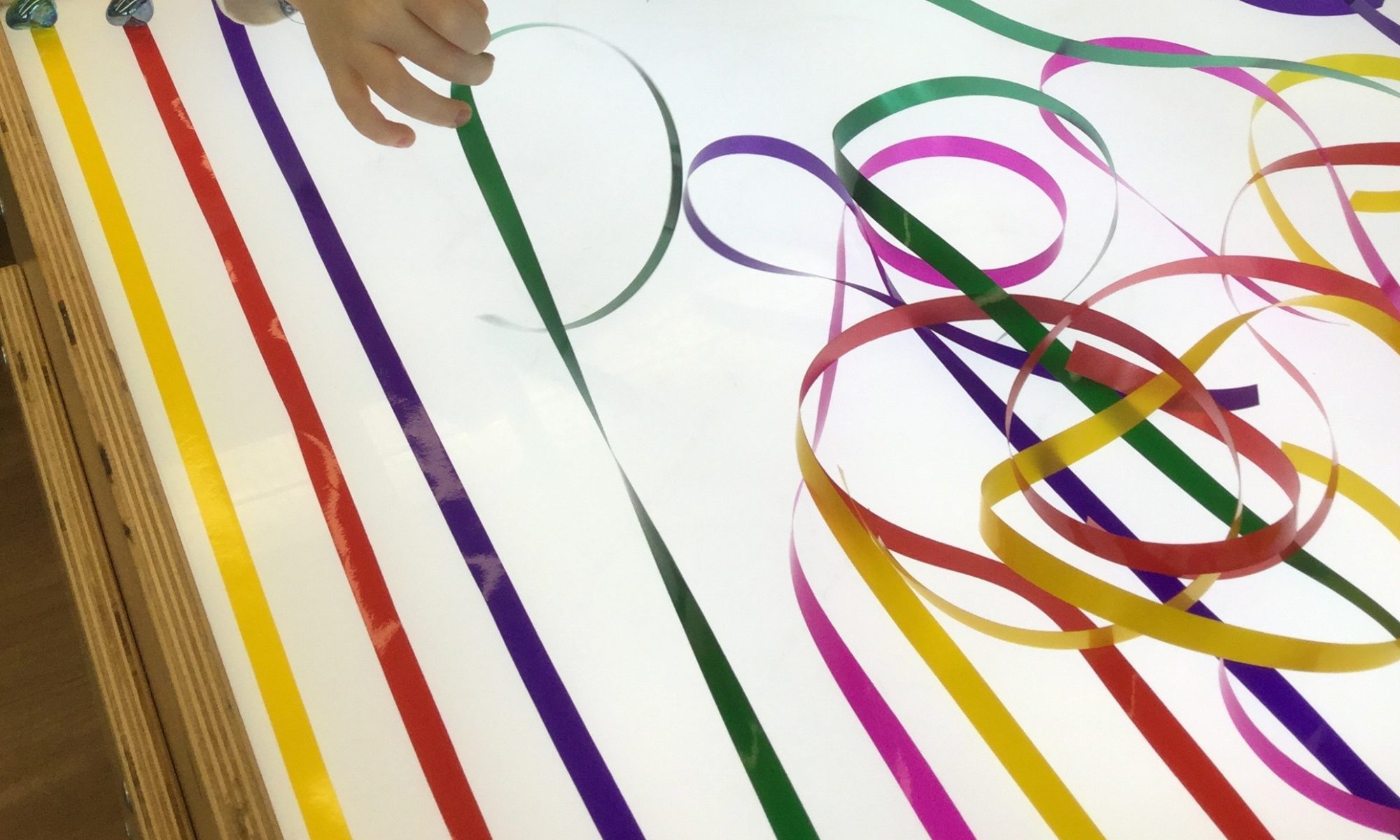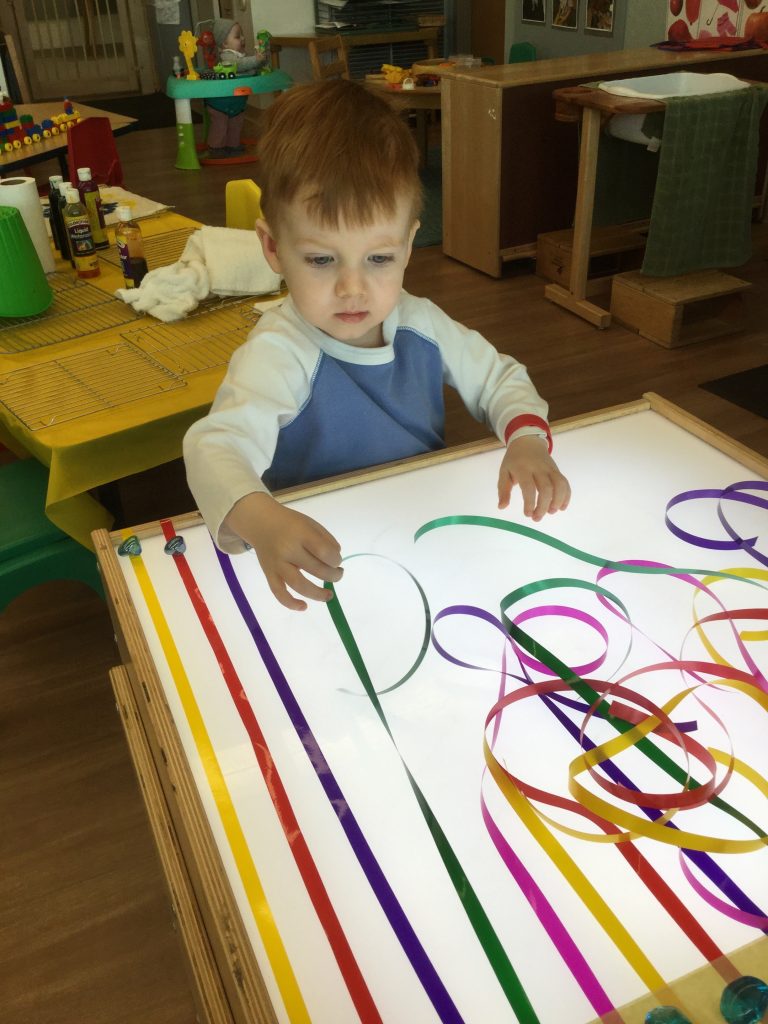Materials:
Large (2 gal.) Ziploc bag
Magnetic steel-rimmed plastic counters from Amazon
Magnets
White paper
Water
Tape
Directions: This is a simple activity to set up and very engaging for young children!
Add a handful of magnetic plastic counters to the Ziploc bag. Pour in two cups of water. Zip the bag, being sure to get as much air out of the bag as possible. Use the tape to seal the bag to prevent accidental leakage. Place the white paper on the table with the Ziploc bag on top. You may want to tape the bag to the table to keep it from moving. Demonstrate to your child how to sweep the magnet over the bag to move the little counters around. Avoid dragging the magnet over the bag, as it eventually causes the bag to leak. If this is your child’s first introduction to using magnets, you can extend the learning by inviting your child to find items around your house that the magnet will stick to—maybe the refrigerator, paper clips, cans, etc. This is a trial and error exercise that can encourage your child to draw conclusions about magnetism, especially the fact that certain things attract the magnet, while other things don’t. Older children may be able to draw conclusions about why this is true, but don’t expect a child younger than four years to know. They are building foundational experiences with magnets.

